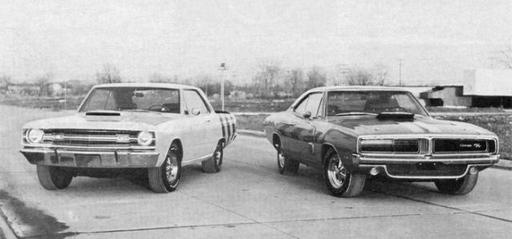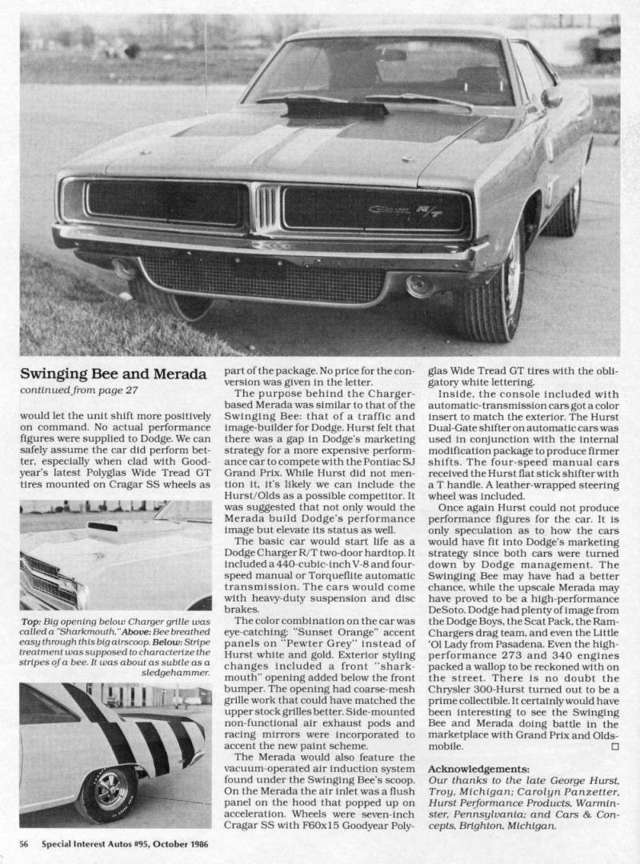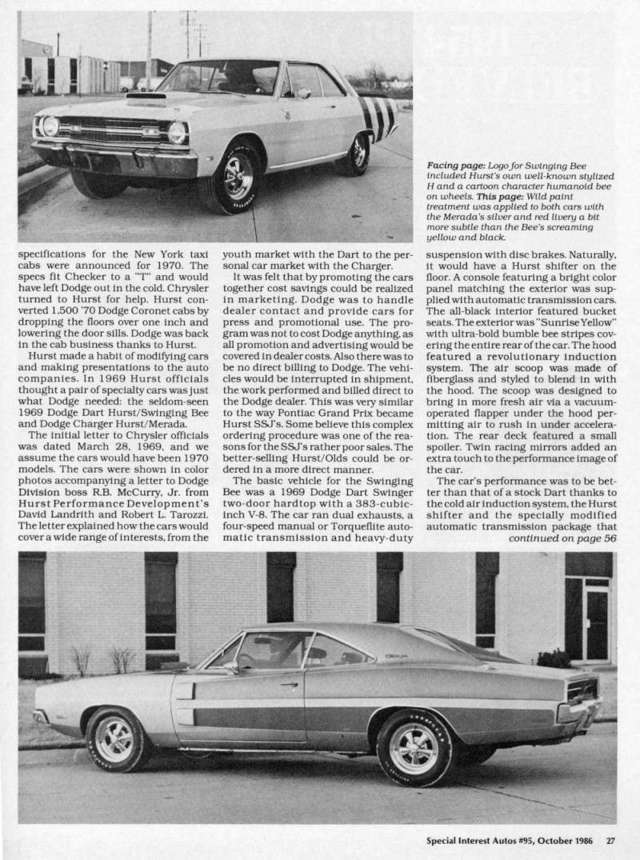Only recently did we talk about the failed-to-launch ’70 Hurst Golden Charger [2], but only touched on the existence of the prototype “Merada” Charger that sparked the conversation between George Hurst and the Dodge Boys. In an article published waaay back in 1986, Hemmings [3] investigated what the Merada was supposed to be, and what ultimately kept it from being available to the general public.
 [4]Hurst, who made his name synonymous with big OHV engine swaps in the late 1940s and throughout the 1950s really entered into the new-from-the-dealer-custom-muscle car market with the Hurst/Olds in 1968. Breaching GM’s 400-cubic-inch ban in any intermediate-sized cars, Oldsmobile was able to offer a “the executive’s super car” through a third party, namely George Hurst.
[4]Hurst, who made his name synonymous with big OHV engine swaps in the late 1940s and throughout the 1950s really entered into the new-from-the-dealer-custom-muscle car market with the Hurst/Olds in 1968. Breaching GM’s 400-cubic-inch ban in any intermediate-sized cars, Oldsmobile was able to offer a “the executive’s super car” through a third party, namely George Hurst.
The H/O’s (or “Hairy Olds” as they became known to street racers) were a forced to be reckoned with, particularly as the 455ci, ram air-equipped Olds’ had enough twist to keep the heavy Cutlasses (remember, Hurst/Olds were NOT technically 4-4-2s) pulling and pulling down the line. Although expensive and targeted for older performance enthusiasts, the H/Os were a unmitigated success.
Hurst, who had reached out to other brands, had developed strong ties with Chrysler. Hurst had built each of Dodge and Plymouth’s Super Stock lightweight HEMI Darts and Barracudas respectively, and was hard at work converting 1,500 Coronet four-door sedans into newly-NY-compliant taxi cabs. Hurst proposed a limited run of “specialty cars” that would be purely dealer-leveraged (costing Dodge nothing), meaning corporate would interrupt production of a Charger – at the dealer’s expense – and hand over the unit to Hurst, who would in turn, complete the manufacturing.
Hemmings dug up this old article, which we ran across while researching our '70 Hurst Golden Charger featurette article.
This complicated, time-consuming and often costly process was similar to the Pontiac Grand Prix-based Hurst SSJ program, a program which ultimately failed due to its complexity. Although future “Golden Chargers” would be ’70 Models, a prototype ’69 Dodge Charger R/T, dubbed “Merada,” was created to illustrate the primarily-aesthetic package.
Painted in Pewter Grey with Sunset Orange stripes running longitudinally down the body sides and across the top included a pair of “air exhaust pods” covered the door alcoves.
 [7]The hood featured a vacuum-operated predecessor to the lay-flat/pop-up “Air Grabber” scoop found on Chargers two years later, funneling cool, dense air into the 440 Magnum plant.
[7]The hood featured a vacuum-operated predecessor to the lay-flat/pop-up “Air Grabber” scoop found on Chargers two years later, funneling cool, dense air into the 440 Magnum plant.
A revised front fascia featured a larger air inlet with a mess grille, eliminating the down bar bumperettes. A pair of bullet-style sport mirrors were added too.
Inside, the Merada Charger featured a revised center console with a color matching treatment and T-handled 4-speed Hurst shifter. If the project were to come to fruition, those “Hurst Golden Chargers” optioned with automatics would be equipped with the venerable Hurst Dual-Gate auto shifter. Designed to compete with the aforementioned “businessman’s muscle car” H/O, the Golden Charger was designed to be an upscale version of the already plush R/T SE, something which Dodge felt was a bit unnecessary.
Moreover, Hurst wasn’t able to provide comparative data proving that the Merada Charger was any quicker than a standard Scat Pack R/T Charger equally equipped, despite rolling on lightweight Cragar S/S wheels wrapped in Goodyear Polyglas Wide Tread GT rubber. Ultimately, the Merada (along with its smaller “Swinger Bee” Dart sibling) were turned down, making this machine yet another “what could’ve been” chapter in muscle car history.



